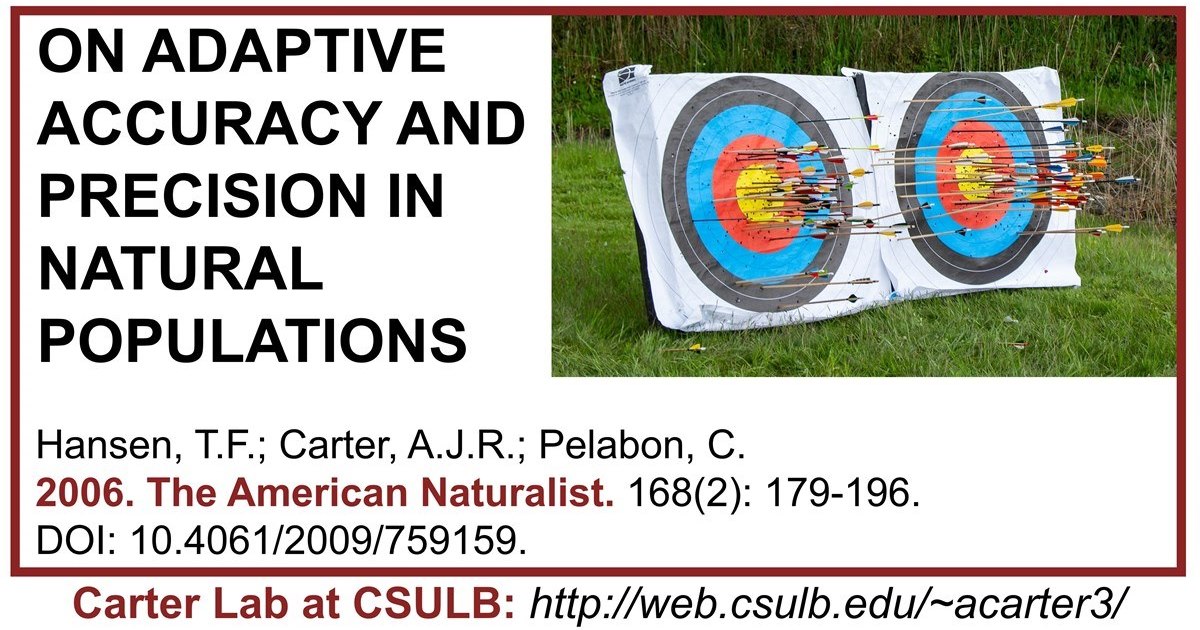ABSTRACT:
Adaptation is usually conceived as the fit of a population mean to a fitness optimum. Natural selection, however, does not act only to optimize the population mean. Rather, selection normally acts on the fitness of individual organisms in the population. Furthermore, individual genotypes do not produce invariant phenotypes, and their fitness depends on how precisely they are able to realize their target phenotypes. For these reasons we suggest that it is better to conceptualize adaptation as accuracy rather than as optimality. The adaptive inaccuracy of a genotype can be measured as a function of the expected distance of its associated phenotype from a fitness optimum. The less the distance, the more accurate is the adaptation. Adaptive accuracy has two components: the deviance of the genotypically set target phenotype from the optimum and the precision with which this target phenotype can be realized. The second component, the adaptive precision, has rarely been quantified as such. We survey the literature to quantify how much of the phenotypic variation in wild populations is due to imprecise development. We find that this component is often substantial and highly variable across traits. We suggest that selection for improved precision may be important for many traits.
